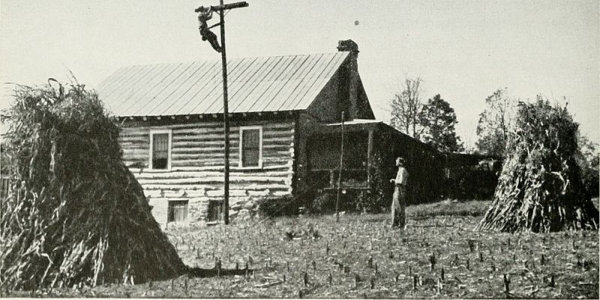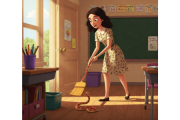“Number, please,” I say again.
“Hazel, I don’t know the number, but I want to call my aunt at Belleville.
Hazel is my mother but my voice was often mistaken for hers. My parents, Howard and Hazel Gunter, owned Wollaston Rural Telephone System from 1941 to 1961 and operated it right from our house in Coe Hill, Ontario. How strange this must seem to the young people of today who communicate mainly by text-messaging and Facebook. When they do use a telephone, it is digital with push buttons and far removed from the wall phones or even the sophisticated desk-set models of the past.
Dad was the linesman, stringing and repairing telephone lines, soldering the joints of the wires, climbing up and down poles in all kinds of weather. He also understood the workings of the telephone and had even built a few during war time when supply was limited. This fact seems ironic when you consider that Dad, up to the time of the purchase of the telephone business, had been “afraid” of telephones and had never used one. Why had he bought this business? He told me that the two stalwart business men of the village, Norman Gilroy and Charlie Rollins, had seen the need for the sake of business and communication with the outside world and had convinced him of its worth and also backed him financially. They had jointly purchased the telephone system from Doctor Harding who had built it as a means of checking on his patients. The system was badly in need of repair, especially the lines that ran to the Ridge, a farming settlement to the south east of Coe Hill.
I never did ask Dad why he would be the one that Norman and Charlie chose but I assume it could have had something to do with my mom (Hazel). She had worked both as a store clerk and a housemaid for Mr. and Mrs. Rollins since the age of fourteen. She also had experience as a telephone operator, having helped on weekends in her very early teens with the switchboard in Fitzgerald’s Store, near where her parents Dick and Moira Soble lived in Monteagle Valley.
Our switchboard sat in the corner of a very small room just off the kitchen and easily accessible from the living room. Mom could hear the rings no matter where she was in the house. In the early 40’s, with only 19 customers, there was no need to sit full time at the switchboard. By 1961, that number had increased to 140 customers.
Although there were telephone directories, many people relied on Mom to know the number of the town person they were calling. It was as if everyone knew that there was a list posted beside the switchboard, a list which, in time, Mom had committed to memory.
There were no local phone booths. People came to our house and used the wall telephone, strategically placed just inside our front door which meant you were really in the corner of our dining room. In the earliest years, the switchboard operated from only 8a.m. to 8p.m.
Although Mom was the primary switchboard operator, I was an operator after school and on weekends from the time I was ten years old. I grew up cranking out the telephone rings. Yes, I mean literally cranking – powered by my arm muscles! There could be as many as 16 customers on a party line. Rings could be as laborious as cranking out 5 long rings and 4 short rings to reach the intended party.
It wasn’t unusual for phone numbers to be listed as 12R6-2, meaning that your line number was 12 and the ring you would listen for would be 6 long rings and 2 short ones. Talk in the house stopped as the rings were counted. Of course, it was tempting for people to pick up the receiver, whether it was their ring or not, and listen in on the conversation at hand. Depending on events unfolding that particular week or month, it was like tuning in to your favourite soap opera!
Everyone hurried to pick up their receiver no matter what time of day or night if they heard one very long incessant ring. That would be my mother letting everyone know whose house, barn or business was on fire. Mom did this for every party line. The message would be short and urgent (ex. Richard Tinney’s house is on fire!). Neighbours and relatives turned out to help and to take the children to their homes. Invariably, there would be a few who did not get to the phone in time to hear mom’s message and they would call saying, “Hazel, where is the fire?” To show their appreciation of her service over the years, Mom eventually received a plaque from the Wollaston Fire Department.
People did not need our assistance to call one another on their own party line, but if they wanted someone on a different line or long distance, they called us. I would push a plug attached to a cord into the numbered hole where the light was blinking, ask for the number wanted, insert the matching plug into the hole of the line wanted and crank out the number. There were times my arm ached by the end of the day. It was a treat when our switchboard was improved by using a push button instead of a crank. Eventually, all customers’ phones were converted from crank to the rotary dial. Although it was a wonderful improvement at the time, it now appears laborious compared to today’s communication systems.
Most small towns had this same private ownership of a local telephone system. To make a long distance call, a connection had to be made to Bell Telephone. In our Wollaston set-up, the calls were routed first to the Central at Gilmour and then to Belleville. I can remember recording on a memo book that had a carbon paper for copying, the details of who placed the call and to whom. This would be needed at the end of the month to verify billings.
Often we were the “bureau of information”: Could you tell me what time it is, my clock has stopped? At what time does the church supper start? Do you know if Edna is home from the hospital?
Small town post offices, general stores, rural telephone offices and even family-run service stations are being replaced by bigger and, supposedly, better ones. Still, the warm memories of these closely-knit, familiar and efficient means of operation of those days- gone- by fill me with a sense of contentment and gratitude for having been part of that era.





